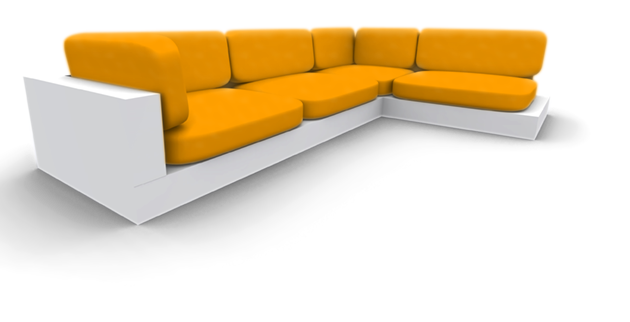1:
2:
3:
4:
5:
6:
7:
8:
9:
10:
11:
12:
13:
14:
15:
16:
17:
18:
19:
20:
21:
22:
23:
24:
25:
26:
27:
28:
29:
30:
31:
32:
33:
34:
35:
36:
37:
38:
39:
40:
41:
42:
43:
44:
45:
46:
47:
48:
49:
50:
51:
52:
53:
54:
55:
56:
57:
58:
59:
60:
61:
62:
63:
64:
65:
66:
67:
68:
69:
70:
71:
72:
73:
74:
75:
76:
77:
78:
79:
80:
81:
82:
83:
84:
85:
86:
87:
88:
89:
90:
91:
92:
93:
94:
95:
96:
97:
98:
99:
100:
101:
102:
103:
104:
105:
106:
107:
108:
109:
110:
111:
112:
113:
114:
115:
116:
117:
118:
119:
120:
121:
122:
123:
124:
125:
126:
127:
128:
129:
130:
131:
132:
133:
134:
135:
136:
137:
138:
139:
140:
141:
142:
143:
144:
145:
146:
147:
148:
149:
150:
151:
152:
153:
154:
155:
156:
157:
158:
159:
160:
161:
162:
163:
164:
165:
166:
167:
168:
169:
170:
171:
172:
173:
174:
175:
176:
177:
178:
179:
180:
181:
182:
183:
184:
185:
186:
187:
188:
189:
190:
191:
192:
193:
194:
195:
196:
197:
198:
199:
200:
201:
202:
203:
204:
205:
206:
207:
208:
209:
210:
211:
212:
213:
214:
215:
216:
217:
218:
219:
220:
221:
222:
223:
224:
225:
226:
227:
228:
229:
230:
231:
232:
233:
234:
235:
236:
237:
238:
239:
240:
241:
242:
243:
244:
245:
246:
247:
248:
249:
250:
251:
252:
253:
254:
255:
256:
257:
258:
259:
260:
261:
262:
263:
264:
265:
266:
267:
268:
269:
270:
271:
272:
273:
274:
275:
276:
277:
278:
|
procedure PostKeyEx32(key: Word; const shift: TShiftState; specialkey: Boolean);
type
TShiftKeyInfo = record
shift: Byte;
vkey: Byte;
end;
byteset = set of 0..7;
const
shiftkeys: array [1..3] of TShiftKeyInfo =
((shift: Ord(ssCtrl); vkey: VK_CONTROL),
(shift: Ord(ssShift); vkey: VK_SHIFT),
(shift: Ord(ssAlt); vkey: VK_MENU));
var
flag: DWORD;
bShift: ByteSet absolute shift;
i: Integer;
begin
for i := 1 to 3 do
begin
if shiftkeys[i].shift in bShift then
keybd_event(shiftkeys[i].vkey, MapVirtualKey(shiftkeys[i].vkey, 0), 0, 0);
end;
if specialkey then
flag := KEYEVENTF_EXTENDEDKEY
else
flag := 0;
keybd_event(key, MapvirtualKey(key, 0), flag, 0);
flag := flag or KEYEVENTF_KEYUP;
keybd_event(key, MapvirtualKey(key, 0), flag, 0);
for i := 3 downto 1 do
begin
if shiftkeys[i].shift in bShift then
keybd_event(shiftkeys[i].vkey, MapVirtualKey(shiftkeys[i].vkey, 0),
KEYEVENTF_KEYUP, 0);
end;
end;
procedure TForm1.Button1Click(Sender: TObject);
begin
PostKeyEx32(VK_LWIN, [], False);
PostKeyEx32(Ord('D'), [], False);
PostKeyEx32(Ord('C'), [ssctrl, ssAlt], False);
end;
procedure TForm1.Button1Click(Sender: TObject);
begin
Edit1.SetFocus;
keybd_event(VK_SHIFT, 0, 0, 0);
keybd_event(Ord('A'), 0, 0, 0);
keybd_event(VK_SHIFT, 0, KEYEVENTF_KEYUP, 0);
keybd_event(VK_LWIN, 0, 0, 0);
keybd_event(Ord('R'), 0, 0, 0);
keybd_event(VK_LWIN, 0, KEYEVENTF_KEYUP, 0);
end;
procedure PostKeyExHWND(hWindow: HWnd; key: Word; const shift: TShiftState;
specialkey: Boolean);
type
TBuffers = array [0..1] of TKeyboardState;
var
pKeyBuffers: ^TBuffers;
lParam: LongInt;
begin
if IsWindow(hWindow) then
begin
pKeyBuffers := nil;
lParam := MakeLong(0, MapVirtualKey(key, 0));
if specialkey then
lParam := lParam or $1000000;
New(pKeyBuffers);
try
GetKeyboardState(pKeyBuffers^[1]);
FillChar(pKeyBuffers^[0], SizeOf(TKeyboardState), 0);
if ssShift in shift then
pKeyBuffers^[0][VK_SHIFT] := $80;
if ssAlt in shift then
begin
pKeyBuffers^[0][VK_MENU] := $80;
lParam := lParam or $20000000;
end;
if ssCtrl in shift then
pKeyBuffers^[0][VK_CONTROL] := $80;
if ssLeft in shift then
pKeyBuffers^[0][VK_LBUTTON] := $80;
if ssRight in shift then
pKeyBuffers^[0][VK_RBUTTON] := $80;
if ssMiddle in shift then
pKeyBuffers^[0][VK_MBUTTON] := $80;
SetKeyboardState(pKeyBuffers^[0]);
if ssAlt in Shift then
begin
PostMessage(hWindow, WM_SYSKEYDOWN, key, lParam);
PostMessage(hWindow, WM_SYSKEYUP, key, lParam or $C0000000);
end
else
begin
PostMessage(hWindow, WM_KEYDOWN, key, lParam);
PostMessage(hWindow, WM_KEYUP, key, lParam or $C0000000);
end;
Application.ProcessMessages;
SetKeyboardState(pKeyBuffers^[1]);
finally
if pKeyBuffers <> nil then
Dispose(pKeyBuffers);
end;
end;
end;
procedure TForm1.Button1Click(Sender: TObject);
var
targetWnd: HWND;
begin
targetWnd := FindWindow('notepad', nil)
if targetWnd <> 0 then
begin
PostKeyExHWND(targetWnd, Ord('I'), [ssAlt], False);
end;
end;
procedure TForm1.Button1Click(Sender: TObject);
const
Str: string = 'writing writing writing';
var
Inp: TInput;
I: Integer;
begin
Edit1.SetFocus;
for I := 1 to Length(Str) do
begin
Inp.Itype := INPUT_KEYBOARD;
Inp.ki.wVk := Ord(UpCase(Str[i]));
Inp.ki.dwFlags := 0;
SendInput(1, Inp, SizeOf(Inp));
Inp.Itype := INPUT_KEYBOARD;
Inp.ki.wVk := Ord(UpCase(Str[i]));
Inp.ki.dwFlags := KEYEVENTF_KEYUP;
SendInput(1, Inp, SizeOf(Inp));
Application.ProcessMessages;
Sleep(80);
end;
end;
procedure SendAltTab;
var
KeyInputs: array of TInput;
KeyInputCount: Integer;
procedure KeybdInput(VKey: Byte; Flags: DWORD);
begin
Inc(KeyInputCount);
SetLength(KeyInputs, KeyInputCount);
KeyInputs[KeyInputCount - 1].Itype := INPUT_KEYBOARD;
with KeyInputs[KeyInputCount - 1].ki do
begin
wVk := VKey;
wScan := MapVirtualKey(wVk, 0);
dwFlags := KEYEVENTF_EXTENDEDKEY;
dwFlags := Flags or dwFlags;
time := 0;
dwExtraInfo := 0;
end;
end;
begin
KeybdInput(VK_MENU, 0); KeybdInput(VK_TAB, 0); KeybdInput(VK_TAB, KEYEVENTF_KEYUP); KeybdInput(VK_MENU, KEYEVENTF_KEYUP); SendInput(KeyInputCount, KeyInputs[0], SizeOf(KeyInputs[0]));
end;
|











































































